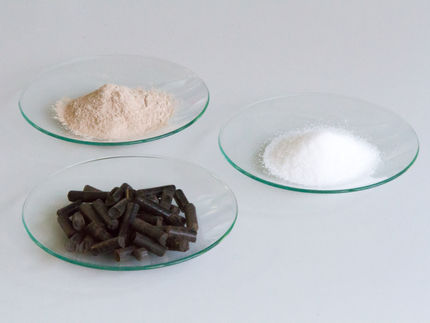Global redistribution of phosphorus use could improve food security
How decisions in China can have a positive global impact
Advertisement
If the use and reuse of the finite resource phosphorus as a nutrient for plants were to be handled with greater care worldwide it would become possible to produce sufficient food for the global population in and after 2050. In addition to being home to a considerable proportion of the global population, China is also a major producer and user of phosphorus. Sheida Sattari, a PhD student at Wageningen University, has shown how the more sustainable use of phosphorus in China can have positive global effects. Sattari determined that Europe and China, where a large amount of phosphorus has been captured in the soil in the past decades as a result of fertilisation, can make considerable savings on the use of phosphorus fertiliser. This can benefit countries in Africa, where investments in phosphorus fertilisation are essential to increase food production.
Food demand is growing due to an increasing global population and changing diets. Meeting these requirements will entail being more careful with our use of land, water, energy and nutrients for plants. Plants use the infinite energy of the sun, but do not grow well if the soil in which they are rooted contains insufficient nutrients such as phosphorus and nitrogen.
Over recent decades the agricultural sector in industrialised countries has over-used phosphate fertiliser, in contrast to most developing countries. This fertiliser requires phosphate rock as ore, which is only extracted in a few places worldwide such as Morocco, China and the US. As there is only sufficient stock for the next 100 to 400 years, a fast and efficient optimisation of the use and reuse of phosphorus is essential.
"A better use and reuse requires innovations and firm decisions from governments," says Sattari. "These innovations would allow the production of more food with less phosphorus as well as the reuse of a large part of the phosphorus. This can be stimulated by governments via legislation and regulations."
In her research Sattari discovered that a better use and reuse of phosphorus in China would have a relatively major impact worldwide. China currently feeds around 20% of the global population (1.3 billion people) for which it uses 30% of the annual phosphorus fertiliser on only 7% of the agricultural area. This makes China by far the largest global consumer of phosphorus fertiliser. In Asia as a whole, China represents half of the total consumption. China is also the largest producer of phosphorus fertiliser, accounting for 37.5% of the total global production in 2010.
Sattari used quantitative analyses to study China’s options for making phosphorus use more sustainable. She concluded that a Chinese policy aimed at the more sustainable use of phosphorus fertilisers and phosphorus that is already contained in the soil could save nearly 20% on the amount of phosphorus from animal and mineral fertiliser until 2050. Sattari: "This is equivalent to half of the phosphorus requirements of the African continent till 2050 and equals the amount of phosphorus needed for Western Europe. This means that China can play an important role in increasing the global sustainable use of phosphorus, and thus contribute to global food security."

































































